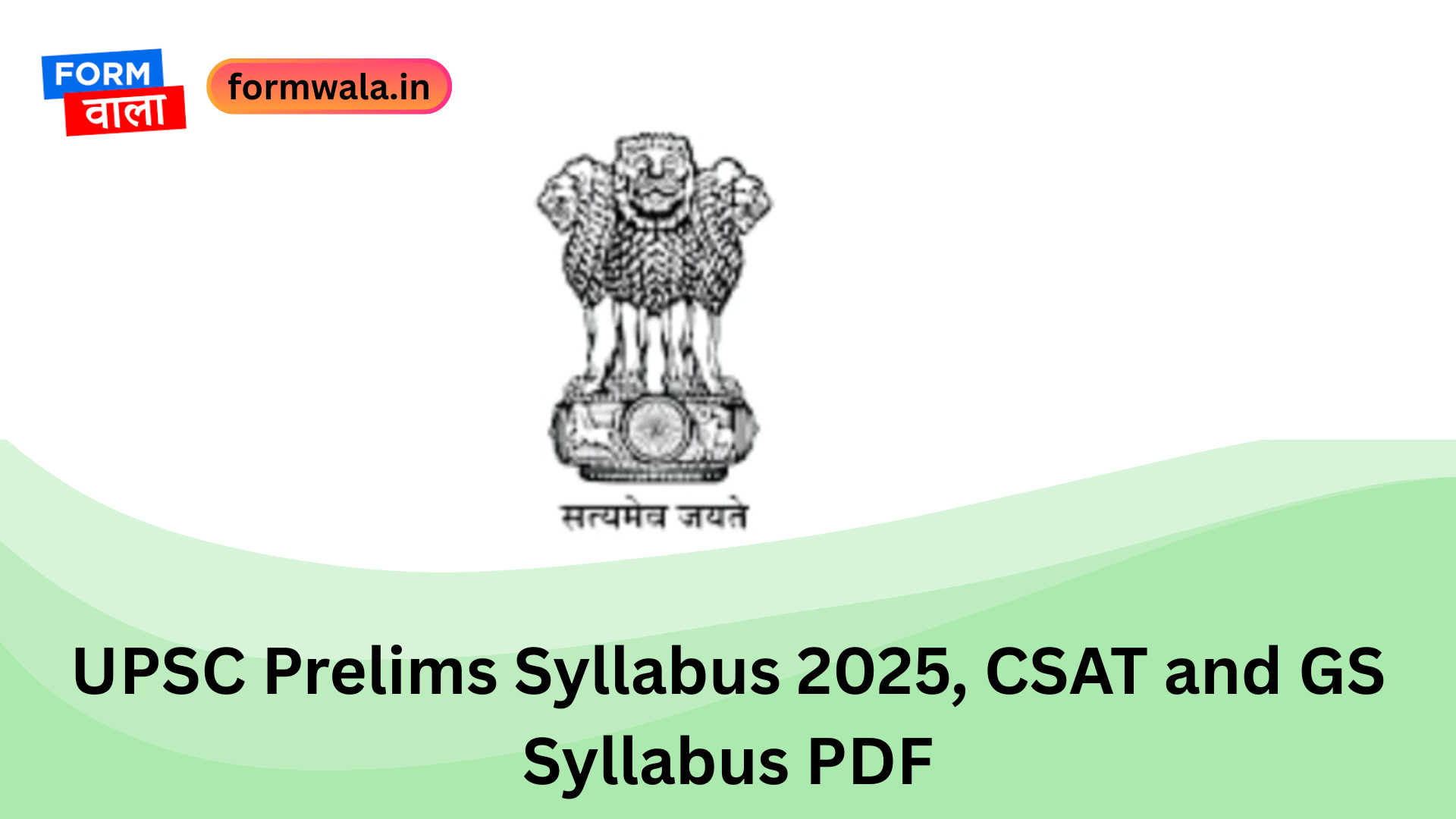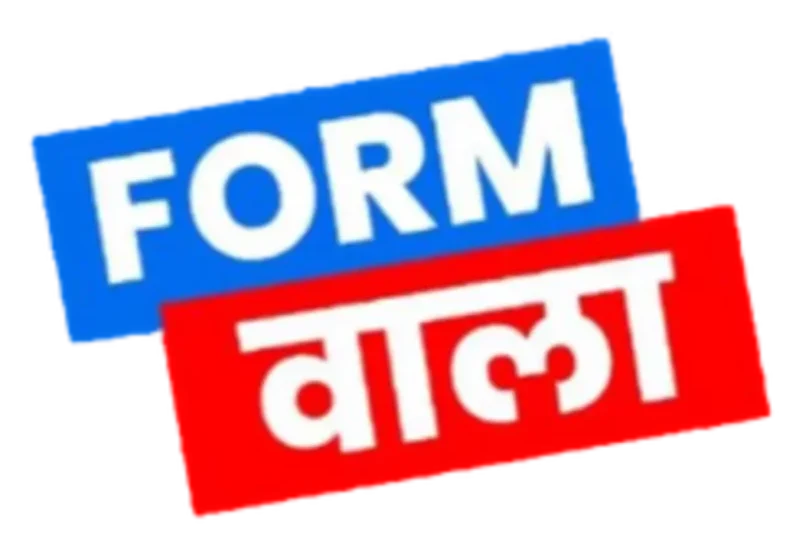Every year, candidates can get their desired government jobs in IAS, IRS, IPS, IFS and other fields through the civil services examinations conducted by the Union Public Service Commission (UPSC). All the candidates who want to apply for these posts have to go through three stages from prelims to mains and then there is an interview round. The initial stage i.e. UPSC Prelims exam is divided into two papers – General Studies and CSAT. Although the marks obtained in UPSC Prelims 2025 will not be counted in the merit list, to be shortlisted for the mains exam, candidates need to clear the first stage.
UPSC Prelims Syllabus 2025
Understanding the UPSC Prelims Syllabus 2025 and exam pattern is important as it outlines specific topics for exam preparation. The syllabus consists of all the important subjects, this will help candidates to increase their score in the examination. UPSC CSE Prelims Exam 2025 is scheduled to be held on May 25, 2025, so without wasting time, complete your preparation from today.
| UPSC Syllabus 2025- Overview | |
| Particulars | Prelims |
| Exam Date | 25th May 2025 |
| No. of Papers | Two (General Studies & CSAT) |
| Types of Questions | Objective Type |
| Duration of Exam | 2 hours each |
| Total Marks | 400 |
| Medium of Exam | English & Hindi |
| Negative Marking | ⅓rd mark |
| Marks Counted in Merit | No |
UPSC Prelims Exam Pattern 2025
It is crucial to know the structure of the exam and the syllabus and subject-wise topics that need to be prepared in and out. Here, we start with understanding the exam pattern and Syllabus of the UPSC CSE (Civil Service Examination) exam: The UPSC prelims exam is divided into two papers. The first paper for the UPSC prelims exam is General Studies (GS) and the second paper is CSAT. The CSAT is known as Civil Services Aptitude Test.
| UPSC IAS Prelims Exam Pattern 2025 | ||||
| Paper | Subjects | Marks | No. of Question | Duration |
| I | General Studies (GS) | 200 | 100 | 2 hours |
| II | CSAT | 200 | 80 | 2 hours |
- There is a negative marking of 1/3 marks for each wrong answer marked and no mark will be deducted for unanswered questions.
- In General Studies (Paper I) candidates will be awarded 2 marks for correct answers and 0.66 will be deducted for each wrong answer.
- In CSAT (Paper-II) candidates will be awarded 2.5 marks for each correct answer and 0.833 marks will be deducted for each wrong answer marked by the candidates.
- The marks of the Prelims exam will not be included in the final result (merit list).
- Paper-II of the Civil Services (Preliminary) Examination will be a qualifying paper with minimum qualifying marks fixed at 33%.
- The General Studies exam is conducted in the morning shift and CSAT in the evening shift on the same day.
UPSC IAS Prelims Syllabus 2025
This section shows the entire UPSC syllabus 2025 for the Prelims Exam. The candidates should review the Prelims exam General Studies (Paper I) syllabus before starting their preparation materials for UPSC CSE 2025.
UPSC Prelims Syllabus for General Studies (GS)
The General Studies (GS) section comprises the initial paper of the UPSC Prelims exam. The UPSC Prelims Syllabus 2025 for General Studies divides itself into these sections.
- Current Affairs(Events) of national and international importance.
- History of India and Indian National Movement.
- Indian and World Geography-Physical, Social, Economic Geography of India and the World.
- Indian Polity and Governance – Constitution, Political System, Panchayati Raj, Public Policy, Rights Issues, etc.
- Economic and Social Development – Sustainable Development, Poverty, Inclusion, Demographics, Social Sector initiatives, etc.
- General issues on Environmental Ecology, Biodiversity and Climate Change: that do not require subject specialization.
- General Science
The following section discusses the topic-wise topics that are commonly asked in the UPSC Prelims exam. If you are planning to prepare for the UPSC 2025 exam, you should not skip any of the topics in the following section, as each topic has its own importance.
Geography
General Geography
- Universe
- Earth Evolution
Geomorphology
- Earth’s Interior
- Geology and Rock System
- Geomorphic Process
- Earthquakes and Volcanism
- Distribution of Continents and Oceans
- Landforms and their evolution
- Landforms across the world
Oceanography
- Hydrosphere
- Submarine Relief Features
- Temperature and Salinity
- Waves, Oceans, Currents, Tides
- Marine Resources
- Ocean, Deposits and Corals
Climatology
- Atmosphere
- Inversion of Temperature
- Insolation and Heat Budget
- Air Mass, Fronts, Cyclones and Jet Streams
- Wind and Pressure Belts
- Precipitation
- Climate Zones of the World
Bio Geography
- Soil Characteristics
- Vegetation Resources
Human and Economic Geography
- Demography and Census
- Human Development
- Economic Activities
- Transport and Communication
- International Trade
- Settlement
Indian Geography
- Physiography of India
- Drainage System
- Climate
- Soils in India
- Natural Vegetation
- Population
- Settlements and Urbanization
- Land Resource
- Mineral Resource
- Energy Resource
- Agriculture and Basic Terminology
- Recent development in agriculture
- Productivity of Crops
- Industry
- Transport
- Recent developments in Industry and Transport
World Regional Geography
- Continents, Countries, and Cities
- Location in News
Ecology & Environment
- Origin of Life Forms
- Basic Concepts of Ecology
- Ecosystem Functions
- Population Ecology
- Adaptation of Species and Interactions
- Terrestrial Ecosystem
- Aquatic Ecosystem
- Nutrient Cycling
Biodiversity
- Basics of Bio-Diversity
- Animal and Plant Diversity
- Threats to Biodiversity
- Biodiversity Conservation
- Estuaries
- Mangroves
- Coral Reliefs
- Wetlands
- Resource Degradation and Management
- Environmental Pollution
- Climate Change
- Environmental Governance
History
Ancient History
- Pre-Historic Times
- Indus Valley Civilization
- Rig Vedic Period
- Later Vedic Period
- Jainism
- Buddhism
- Mahajanpadas
- Mauryan Period
- Post-Mauryan Period
- Gupta Period
- Harshwardhana Period
- Sangam Period (South-Indian Dynasties)
Medieval History
- Major Dynasties of Early Medieval India (Pratiharas, Pallavas, Chalukyas, Rashtrakutas)
- Cholas and South-Indian Kingdoms
- Early Muslim Invasions
- The Delhi Sultanate
- Afghans, Rajputs & Mughals
- Establishment of North-Indian Empire
- The Mughal Empire
- Marathas and the Other Indian States
- The decline of the Mughal Empire
- Vijaynagar Empire
Modern History
- Advent of Europeans
- British Expansion
- Administration before 1857
- Economic Policies of the British
- Impact of British Administration
- Revolt of 1857
- Administrative Changes after 1857
- Development of Civil Services
- Development of Education
- Development of Press
- Socio-Religious Reforms
- Peasant Movements
- Revolutionary Nationalism
- Indian National Movement-I (1905-1918)
- Indian National Movement-II (1918-1929)
- Indian National Movement-III (1930-1947)
- Governors-General and Viceroys of India
- Constitutional Development of Indian
Art & Culture
- Architecture
- Sculpture
- Paintings
- Pottery Tradition
- Numismatics
- Performing Arts
- Religion and Literature
- National and Regional Festivals
Polity
- Evolution of the Consitution
- Salient Features of Indian Constitution
- Union & Its Territory
- Citizenship
- Fundamental Rights
- Directive Principles of State Policy
- Fundamental Duties
- System of Governance
- Union Executive
- Union Legislature
- State Executive
- State Legislature
- Local Government
- UT and Special Areas
- Judiciary
- Constitutional & Non-Constitutional Bodies
- Political Dynamics (Political Parties, Election, Pressure Groups)
- Governance
- International Relations
Economy
Basic Concepts
- Macroeconomic Concepts
- Microeconomic Concepts
Economic Measurements
- National Income & Its Calculation
- Economic Growth and Development
- Inflation
Money & Banking
- Money Function & Classification
- Financial Markets & Its Instruments
- Banking Structure in India
Public Finance in India
- Budgeting
- Fiscal Policy
- Centre-state Distribution
- Tax Structure in India
Planning
- Meaning, Objective & History
- Planning Institutions
- Five Year Plans in India
- NITI Aayog
Open Economy
- Foreign Trade Concepts
- International Organizations
- Trade Agreements
- Recent Development
Economic Sectors
- Poverty
- Employment and Unemployment
- Government Schemes and Programmes
General Science
- Science & Technology in India
- Space
- IT and Communication
- Materials, Nano Technology and Robotics
- Defence
- Nuclear Technology
- Intellectual Property Rights and Other Miscellaneous Issues
- Biotechnology
UPSC Prelims CSAT Syllabus 2025
The UPSC CSAT exam syllabus as mentioned by UPSC in its notification covers the following broad categories:
- Comprehension
- Interpersonal skills including communication skills
- Logical reasoning and analytical ability
- Decision-making and problem-solving
- General mental ability
- Basic numeracy (numbers and their relations, orders of magnitude, etc.) (Class X level), Data interpretation (charts, graphs, tables, data sufficiency etc. – Class X level).
UPSC Prelims Syllabus 2025 PDF- Click to Download
Subject-Wise Weightage and Marks Distribution
Here we have listed the subject-wise weightage for the number of questions in UPSC IAS Prelims Paper 1 (GS) for the last 7 years. In UPSC CSE Prelims General Studies Paper, most of the questions are asked from History and Current Affairs section.
| UPSC Prelims Paper 1 (GS) Marks Distribution and Weightage | |||||||
| Year | History | Geography | Current Affairs | Polity | Science and Technology | Environment | Economics |
| 2022 | 16 | 12 | 17 | 13 | 14 | 11 | 17 |
| 2021 | 20 | 10 | 27 | 14 | 8 | 11 | |
| 2020 | 20 | 10 | 18 | 17 | 10 | 10 | |
| 2019 | 17 | 14 | 22 | 15 | 7 | 11 | |
| 2018 | 22 | 10 | 14 | 13 | 10 | 13 | |
| 2017 | 14 | 9 | 15 | 22 | 9 | 15 | |
| 2016 | 15 | 7 | 27 | 7 | 8 | 18 | |


